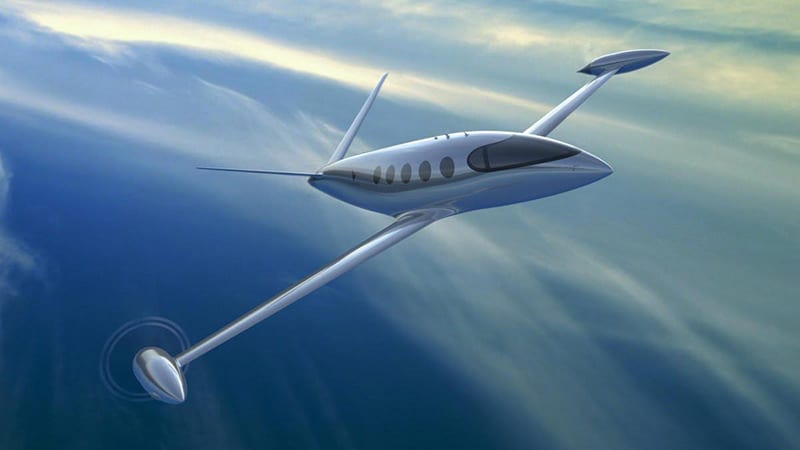
Honeywell released a new cooling system, miniature satellite communications device and work towards autonomy products for drones and air taxis. Photo: Eviation
Following Honeywell’s announcement of its new urban air mobility and UAS business unit, the company announced new products designed specifically for these systems: a lightweight vapor cooling solution, a satellite communications offering for drones, and the beginning of flight tests for sensors that will enable autonomous landing.
The Micro Vapor Cycle (VCS) cooling system, according to Honeywell, is up to “35 percent lighter and 20 percent more efficient than conventional vapor cycle systems with comparable cooling capacity.” Honeywell’s first public customer is Eviation, which will add the system to its Alice electric aircraft this summer.
Honeywell’s new UAS satcom system, which the company claims is the smallest in the world, brings connectivity via Inmarsat’s global satellite network at a weight of just 2.2 pounds. Though many believe drones will primarily use cellular networks for beyond visual line of site (BVLOS) connectivity, satcom could serve as a backup where those networks are unreliable.
“We see our terminal as the backup communication system for platforms operating primarily in urban spaces where 4G coverage exists in order to fly BVLOS,” a representative for Honeywell told Avionics. “For vehicles operating in more remote areas, this terminal would be the primary communication system to enable BVLOS operations.”
Though the mini-satcom product is being launched by Honeywell’s Aerospace Connected Secure Solutions business, that part of the company is working closely with the new UAM/UAS unit to bring the product to air taxi customers.

Honeywell designed its new Micro-VCS compressor based on mature, fielded units that have been featured on aircraft such as the F-22 and E2-C/D. It comes Honeywell’s Forge – Connected Maintenance solution for health monitoring and predictive analytics as well. Photo: Honeywell Aerospace
The Federal Aviation Administration has not yet established communication standards for communication to enable BVLOS flight, but Honeywell is confident this product will be “well-positioned” as new regulations are developed.
Honeywell has also begun flight testing of sensors that will enable UAM aircraft to land autonomously, which is widely considered a key enabler of UAM at scale.
“Aircraft involved in the testing are outfitted with Honeywell sensors and include cameras that analyze visual markings resembling QR codes, which help guide the vehicle to a designated landing spot,” a company press release stated. “This is a key first step for the future of flight as Honeywell adds sensors that support safer, autonomous urban air mobility operations.”
Data collection involved in this product will continue for the rest of 2020, with the demonstration of autonomous landings taking place “within roughly the next 12 months,” according to Honeywell.